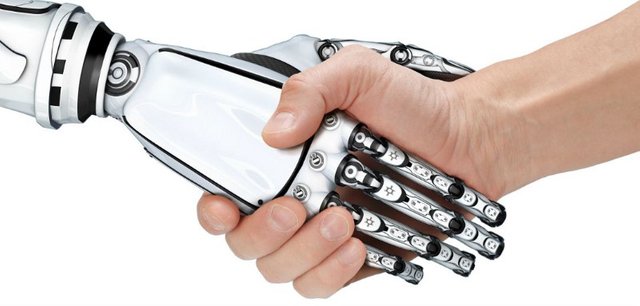Can You See The Future? The Rise of Machine Learning
DISCLAIMER: Originally published on Medium on “October 24, 2018”.
Republished with permission of the author.
Republication proudly sponsored by the Volentix DAE.
https://medium.com/@thegreatdane656
by Dane Keller Rutledge
December 7, 2018
An integrated community of humans and machines must work together to ensure a sustainable future.

Many humans shake their heads when they hear about blockchain and cryptocurrency technology. The specter of complex software programming language leads lay people to believe they dare not hope to comprehend such subjects. But it's really all quite simple.
Almost everyone is familiar with what are known as "applications" -- so-called "apps" -- downloaded on mobile phones and other smart devices. Digital assets are nothing more than a form of digital application. And in the case of digital applications such as the digital assets Bitcoin and Ethereum, those digital applications are decentralized.
A "decentralized application" -- a so-called "DApp" -- seeks to avoid a central point of failure. DApps constructed on open-source code permit innovation without significant restriction by intellectual property law. Indeed, because DApps are decentralized, anyone can chime in with proposals for amendment. DApps are distributed globally and, by virtue of being open-source, are also transparent. By encouraging broad community support, It is entirely possible the decentralized software development model will prove over time to be superior to the centralized method conventionally utilized by the tech giants.
The goal for any DApp is community saturation, meaning the more distributed the better. In essence, a DApp is owned by no one and yet by everyone, not by a corporation or a small group of individuals. Decisions are made by a form of democratic voting. Ideally, as diversity increases, a decentralized application becomes more healthy and robust.
I previously introduced the concept of a comprehensive digital assets ecosystem (DAE). I posited that several specific DApps are important to consider in constructing a DAE: a multi-currency peer-to-peer digital wallet, a market-data analytics engine, an incentives-based recruitment platform, and a decentralized exchange, all operated by utilizing a digital asset unit that is native to the ecosystem. In effect, a DAE is one master DApp composed of integrated DApp components.
Ideally, any DApp operates efficiently and effectively without the need for centralized intervention. Early in the developing life of a DApp, it may be necessary for the original programmers to modify the software. But as the application matures, it seeks to become autonomous and self-sustainable by virtue of support from a dedicated decentralized community.
Self-sustainability of a DApp presupposes an incentivized community base, rewarded for its innovative contributions to the maturation process of the DApp. Rewards are funded by a treasury from which digital asset units are generated and distributed in exchange for significant contributions to the DApp's health and longevity. Progressive decentralization occurs naturally as the native units of value of the digital assets ecosystem become more widely distributed over time.
Though the core protocol of a particular DApp must be elastic in the face of challenges it will inevitably face, a DApp must also be flexible and adaptive. This is where science and engineering meet art. And the collective consciousness, by proposing and voting on forward solutions, converges on creative remedies.
As artificial intelligence (AI) and machine learning (ML) gain traction in our daily lives, the language by which we communicate with machines, and by which machines speak to each other, will become more precise and more accurate. This is the realm of ontology as it pertains to a blooming iteration of the Internet known as the Internet of Things (IoT). Smart contracts will provide the basis for standardization of linguistic variables. Every professional, including lawyers, accountants, and doctors, will effectively become a coder. The universal language will emerge. Computers will use and refine a global consensus language to manage communications and transactions. Eventually, micro-transactions will be run essentially entirely by machines.
What today's humans see as science fiction, tomorrow's humans will see as invention, and the humans of the near future will see as the basic necessities of daily life.
DKR
CAUTION/DISCLAIMER: Please do not take any of what is written in this editorial as legal advice (or, for that matter, as advice of any kind). One should always seek advice of one's own legal counsel and/or other relevant professionals.
Copyright 2018
Dane Keller Rutledge
All rights reserved
Hi! I am a robot. I just upvoted you! I found similar content that readers might be interested in:
https://medium.com/@thegreatdane656/an-integrated-community-of-humans-and-machines-must-work-together-to-ensure-a-sustainable-future-57e640825a4d